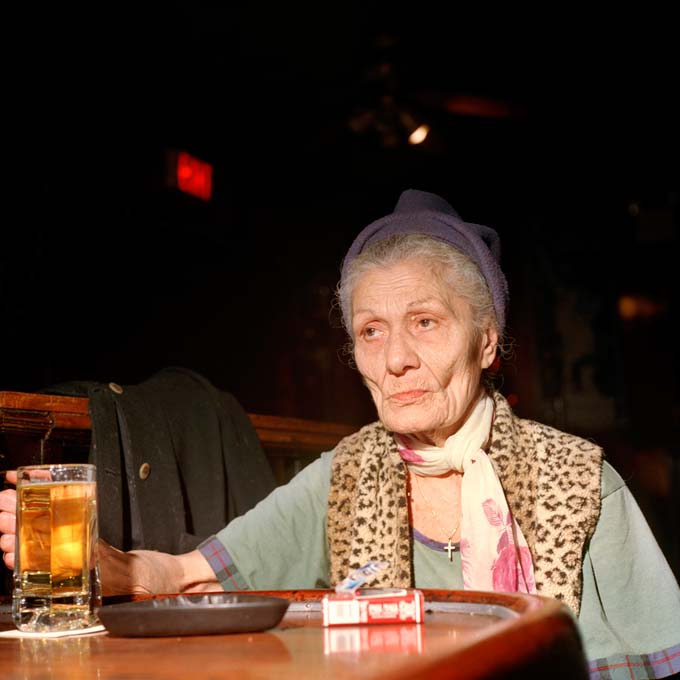
Juliana Beasley, Leopard Lady, 2003. Photo courtesy Juliana Beasley/Contact for Creative Time Reports.
On October 29, 2012, Hurricane Sandy left a path of devastation and destruction along the eastern coastline. The Rockaways peninsula was one of the hardest hit in the metropolitan New York area and the media was there to show the wreckage, the loss and the emotional trauma left behind in the wake of the storm.
Hurricane Sandy marked the abrupt and unplanned end of my 10-year project photographing the once-forgotten neighborhood of Rockaway Park, known to the locals as Rockaway Beach. I first came out to the boardwalk at Beach 116th Street in the summer of 2002. I stood outside the Sand Bar and was instantly mesmerized when I witnessed a bartender jump over a bar with a baseball bat in his hands, chasing a disruptive and unruly customer off the premises. As I looked around the bar at the patrons—a mix of disheveled, raucous regulars and sunburnt beachgoers guzzling down cheap beer from plastic cups—I immediately became enamored with a scene that appeared to be a hundred miles away from the gentrified and homogenized streets of Manhattan. The neighborhood felt untouched by time. There wasn’t one Starbucks to be found on the entire peninsula. I decided to return the next week with my camera.
Over the years I have befriended and shared many stories with the residents living near Beach 116th. Many were a forgotten lot, society’s outcasts deposited here many years ago by a social system that pushed them far away from glitz of Manhattan. Many of my subjects have died untimely deaths due to self-destructive lives ridden with alcoholism and addiction. They lived in SROs and boarding houses subsisting on meager disability and Social Security checks. Others struggled with debilitating mental illnesses, residing in adult homes alongside the elderly. Some just disappeared, moved on or moved away. Their cell phones had been disconnected. Time passed and I made new friends and photographed different subjects.
Today there is a new Rockaways. While hipsters pay $15 to take a round trip school bus from trendy Williamsburg in Brooklyn or the East Village in lower Manhattan to spend a day at the beach surfing or lounging in the sun, opportunistic landlords seem to be lurking on the side, hoping to better their real estate prospects. I wonder what will happen to the Rockaways, and more importantly, what will become of the many impoverished and disabled inhabitants who had found and made a home at the last stop in a city where social services are strained and mismanaged.
Rockaway Beach, for better or worse, will probably never be as I once discovered it for myself back in the summer of 2002. I hope that these photographs will serve as a testament to a slice of New York City’s history, as well as a memory to the many wonderful people who allowed me to take their photograph. They should never be forgotten.
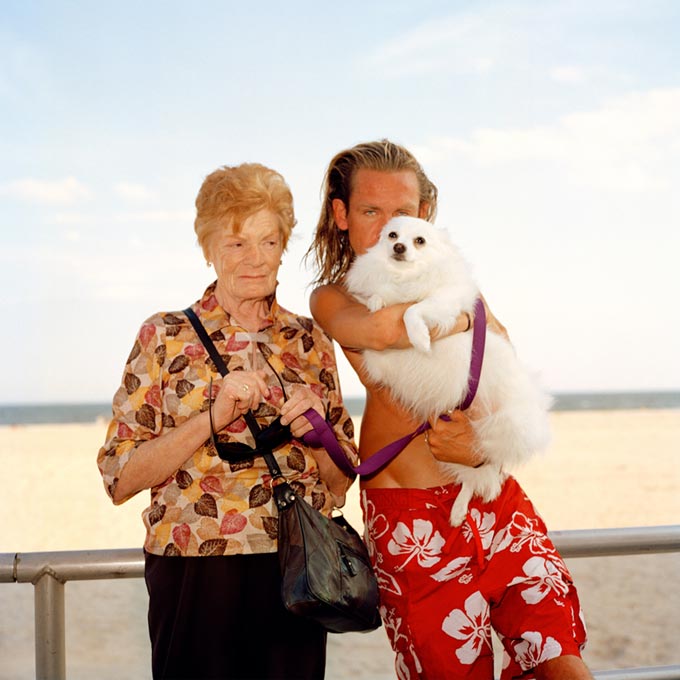
Juliana Beasley, Bryan and Bernadette, 2008. Photo courtesy Juliana Beasley/Contact for Creative Time Reports.
I took this photograph while spending time with Bryan and some of his friends on the boardwalk. I asked the woman, Bernadette, if she would let me photograph her with Bryan. Later I found out that Bryan had died in his sleep of a drug overdose.
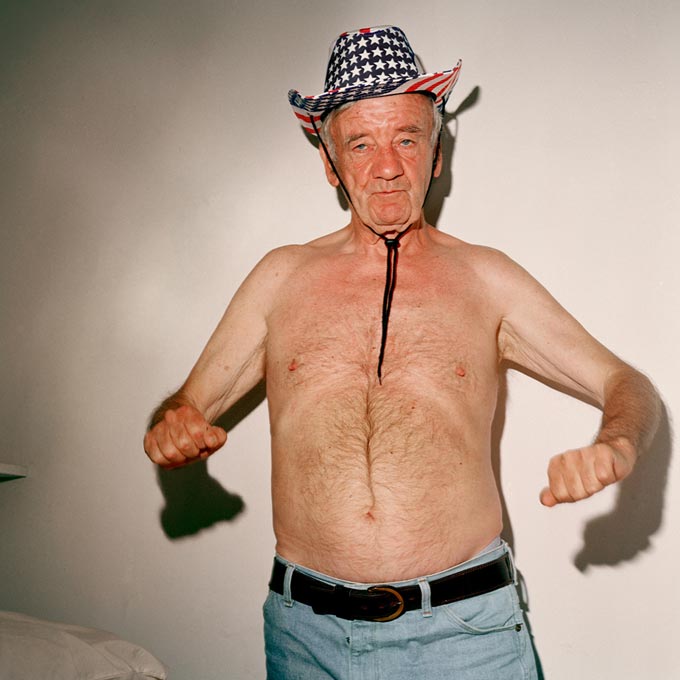
Juliana Beasley, Charlie Cowboy, 2004. Photo courtesy Juliana Beasley/Contact for Creative Time Reports.
I took this photograph on July 4th, after I hadn’t seen Charlie for many months. He had stopped drinking and was doing well in his new, sober life.
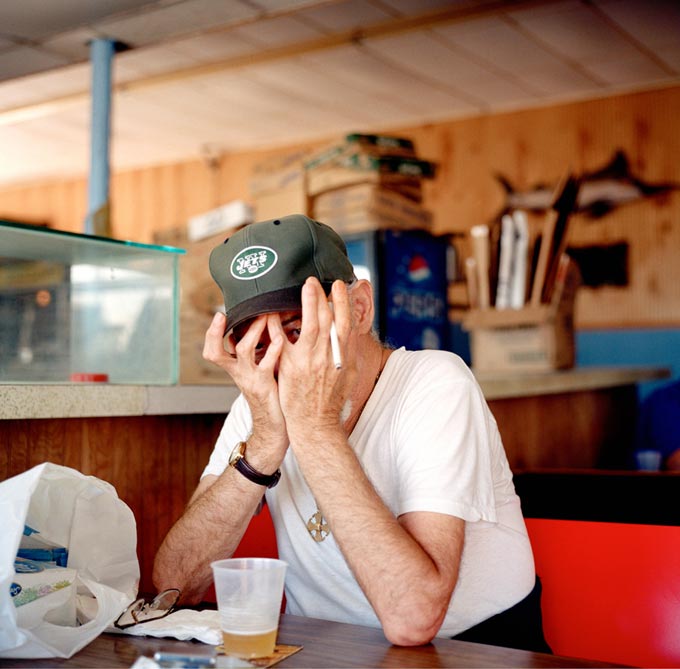
Juliana Beasley, Hiding, 2002. Photo courtesy Juliana Beasley/Contact for Creative Time Reports.
When I photographed this man at the Sand Bar at the beginning of my project, he covered his face. Soon after, I realized that some of the bar’s patrons were living next door at the Park Inn, an adult residency for the mentally ill.

Juliana Beasley, Isabelle, 2006. Photo courtesy Juliana Beasley/Contact for Creative Time Reports.
I became friends with Isabelle in 2006, when she was living in a local adult home in a room shared with another resident. Isabelle’s side of the room was covered in American flags and photographs of Jesus. She desperately wanted to leave. Several years later, one of her fellow residents told me that Isabelle had died in her sleep.

Juliana Beasley, Mae and Mattress, 2006. Photo courtesy Juliana Beasley/Contact for Creative Time Reports.
I had met Mae early in the project, but had not seen her for several years. On this hot summer day, I found her standing in the front yard of Lulu’s boarding house on 113th, where she had been living.
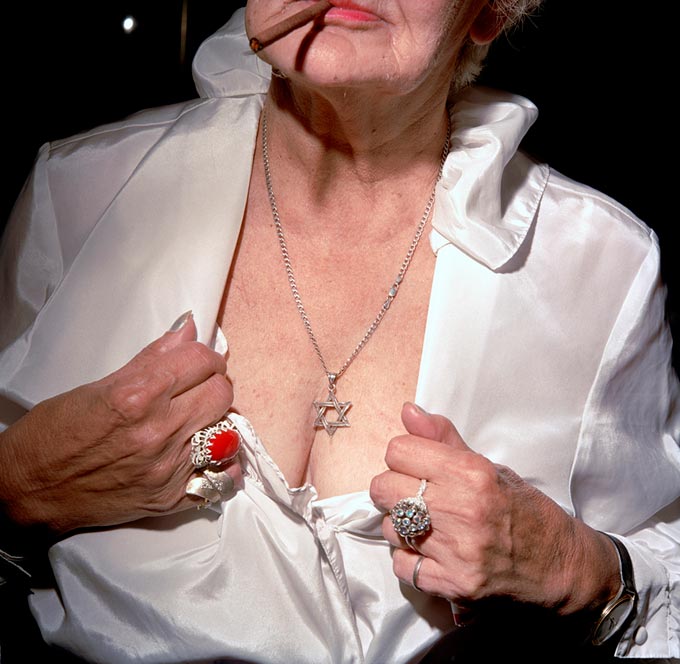
Juliana Beasley, Frieda, 2003. Photo courtesy Juliana Beasley/Contact for Creative Time Reports.
Frieda lived in one of the many nursing homes in the Rockaways. I took this photograph of her one evening at the now-defunct bar Palm Gardens, where she was known for her good humor and for smoking in defiance of the recently passed law prohibiting it in public places.
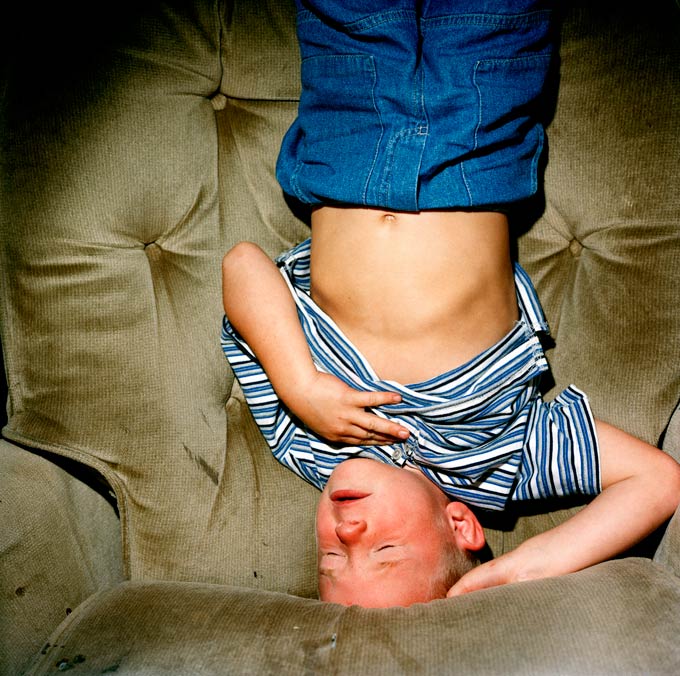
Juliana Beasley, Seamus Upside Down, 2003. Photo courtesy Juliana Beasley/Contact for Creative Time Reports.
Seamus and his parents lived on the top floor of Paddy’s boarding house on the boulevard. I met him and his mother Colleen through one of my subjects, Charlie, who lived in the same house. Paddy looked after Seamus when his parents were at work or unavailable. Here he is standing on his head in a worn easy chair.
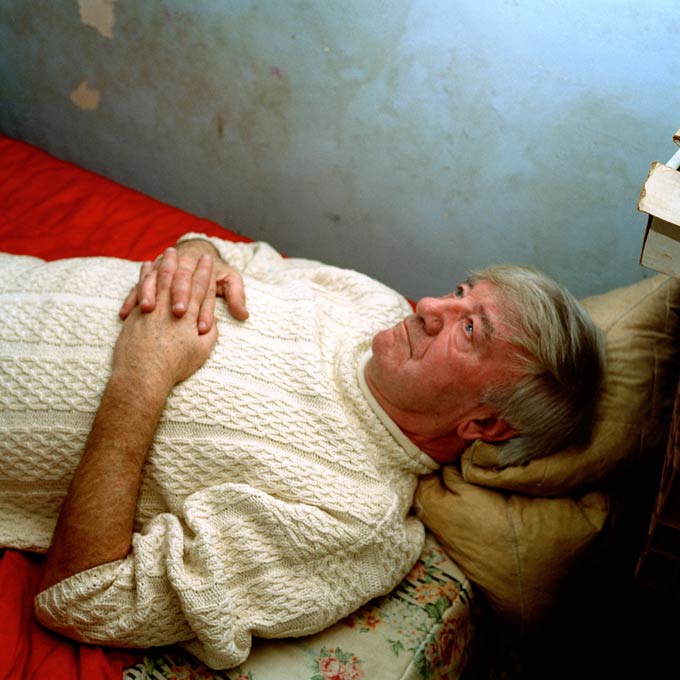
Juliana Beasley, Charlie Praying, 2003. Photo courtesy Juliana Beasley/Contact for Creative Time Reports.
Charlie lived in a boarding house on the boulevard. One night, I went back to his room and asked him if he could show me how he prayed.

Juliana Beasley, Stephanie and Her New Kitten, 2012. Photo courtesy Juliana Beasley/Contact for Creative Time Reports.
Stephanie lived in a small bungalow apartment she shared with her boyfriend, Joel, and their baby. The bungalows were flooded during Hurricane Sandy and the family has since relocated.

Juliana Beasley, Hotel, 2006. Photo courtesy Juliana Beasley/Contact for Creative Time Reports.
An anonymous resident from a local adult home walks down 116th Street toward the boardwalk on a summer afternoon.
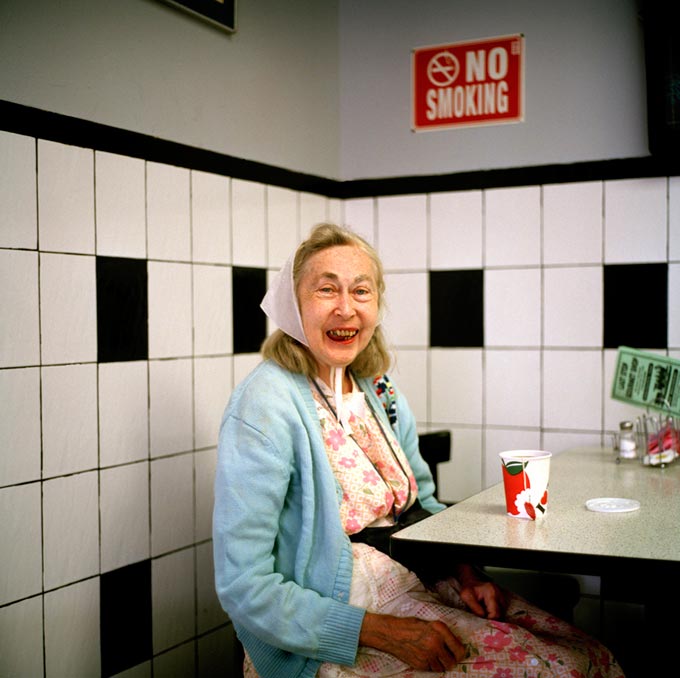
Juliana Beasley, Last Stop Diner, 2002. Photo courtesy Juliana Beasley/Contact for Creative Time Reports.
This image is from my very first trip shooting photographs in the Rockaways, in the summer of 2002. I returned to the diner with a print to give to the woman and asked the owner and wait staff if they knew how I might find her, but I never saw her again. Over the years, I became used to subjects who would come into my life and suddenly disappear without a trace.

Juliana Beasley, Butchie Under Covers, 2003. Photo courtesy Juliana Beasley/Contact for Creative Time Reports.
I took this photograph of Butch McBride one evening in the room he rented in a boarding house. After learning of the death from pneumonia of a dear friend, Butch went on a drinking binge, fell and cut his forehead. I found out last year that Butch is now dead, too.
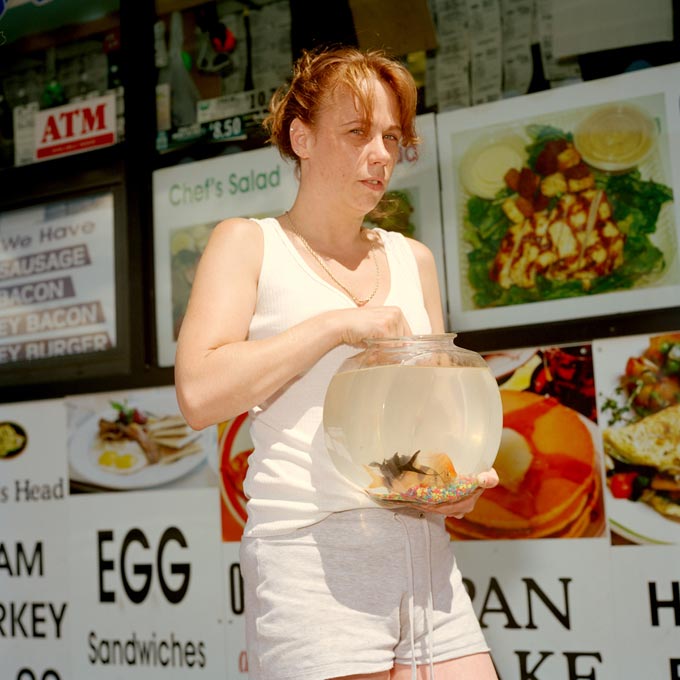
Juliana Beasley, Fishbowl, 2006. Photo courtesy Juliana Beasley/Contact for Creative Time Reports.
I photographed this young woman in front of Pickles and Pies, the corner deli in the neighborhood she was moving into with her mother. She was transferring her fish from the bowl to a tank in the new apartment.
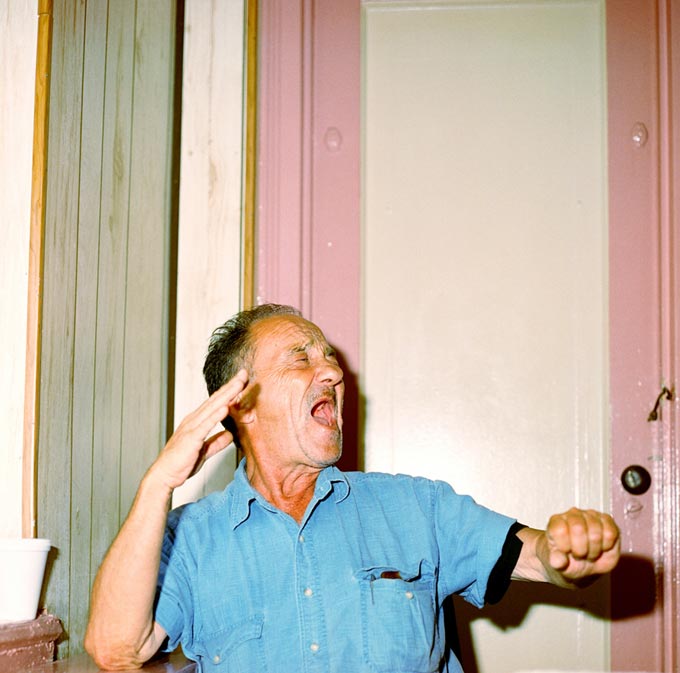
Juliana Beasley, Henry, 2008. Photo courtesy Juliana Beasley/Contact for Creative Time Reports.
I became friends with Henry when we met one summer afternoon on 116th Street. He lives at one of the local adult homes in the Rockaways that house many of New York City’s mentally ill.
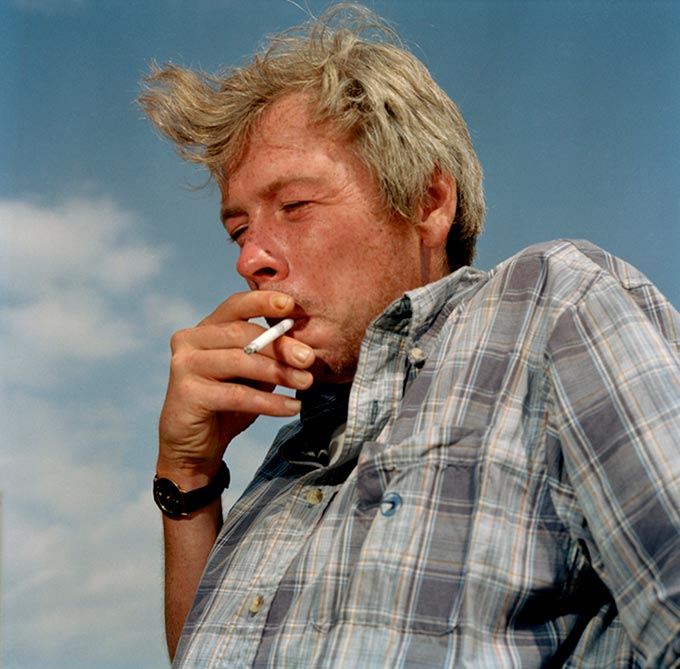
Juliana Beasley, John Trainer, 2003. Photo courtesy Juliana Beasley/Contact for Creative Time Reports.
I took this photograph of John Trainer on the boardwalk. He was a serious alcoholic who spent his days drinking morning to night and lived in an abandoned house with other alcoholic men. Though the local rumor was that he had come from an “upstanding” family, many people in the neighborhood considered him a pest since he was always asking for a handout. I guessed that he was probably only 38 when I took this photograph of him. When I returned the following year, I learned that he was dead.
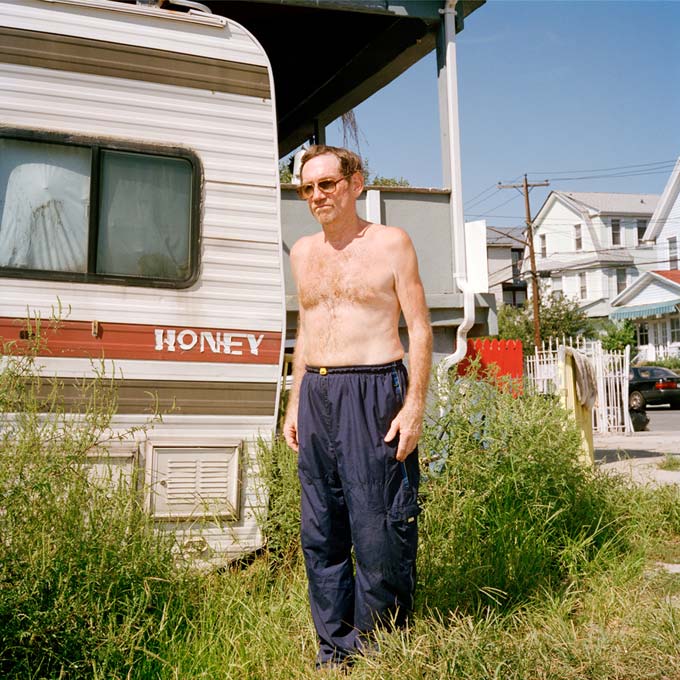
Juliana Beasley, Camper Bob, 2008. Photo courtesy Juliana Beasley/Contact for Creative Time Reports.
Bob lives in a camper with his dog, Zeus, in an empty lot next to an SRO on 115th Street. Despite his meager existence, Bob closely follows current events and has strong political opinions. After the widespread devastation of Hurricane Sandy, I was surprised to find that both Bob and his camper had survived intact.
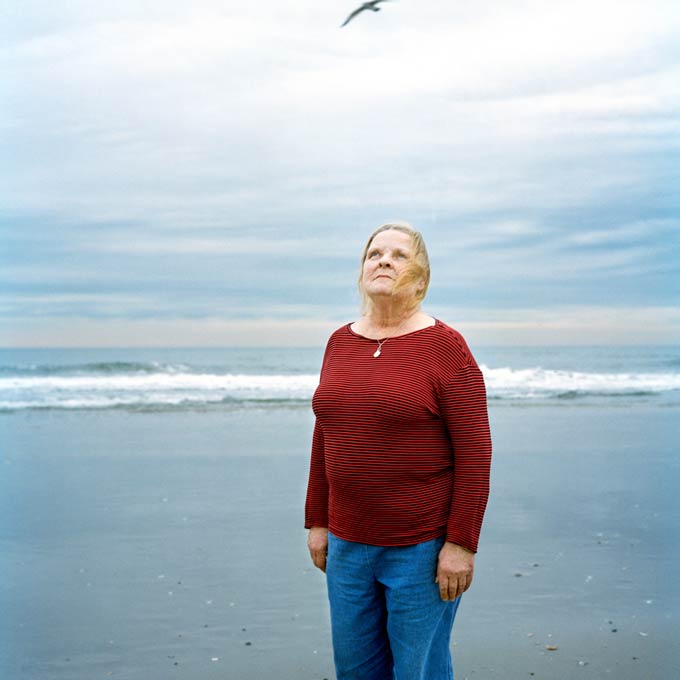
Juliana Beasley, Barbara at Water’s Edge, 2011. Photo courtesy Juliana Beasley/Contact for Creative Time Reports.
Barbara rents a room in one of the many shared boarding houses in Rockaway Beach. Rents are typically more affordable to low-income tenants.

Juliana Beasley, Green Door, 2012. Photo courtesy Juliana Beasley/Contact for Creative Time Reports.
After being flooded by Hurricane Sandy, several blocks of buildings on Rockaway Boulevard burned to the ground. I found this pile of remnants between 113th and 115th Streets.
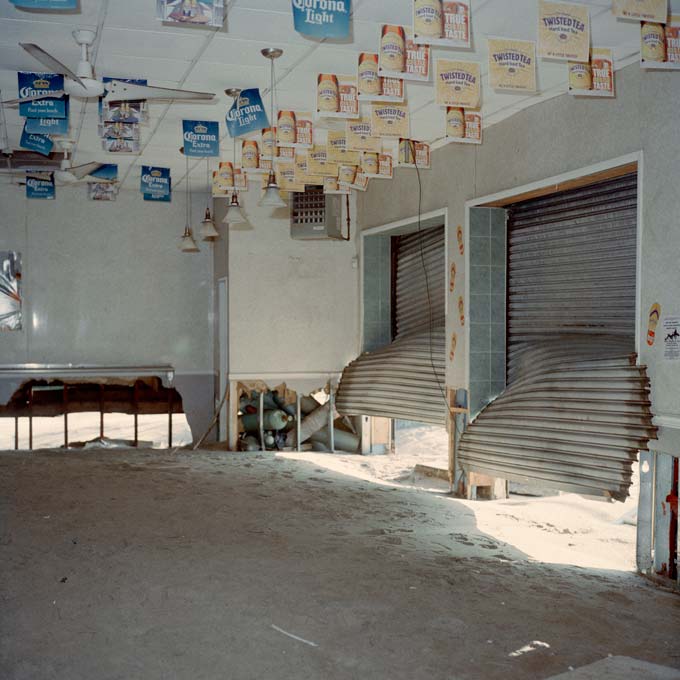
Juliana Beasley, Interior of Sand Bar post Sandy, 2012. Photo courtesy Juliana Beasley/Contact for Creative Time Reports.
Sand Bar, a bar on the Rockaway boardwalk that is popular with both tourists and locals, was still filled with sand several weeks after Hurricane Sandy, making its name all too apt.
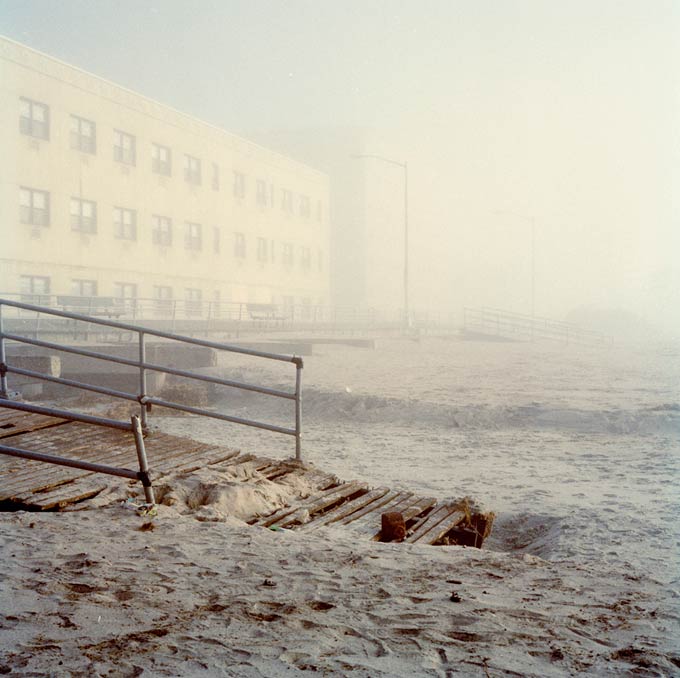
Juliana Beasley, Boardwalk at Beach 115th, 2012. Photo courtesy Juliana Beasley/Contact for Creative Time Reports.
Three weeks after Hurricane Sandy, the worn and battered boardwalk became a symbol of not only the storm’s devastation upon the peninsula and its inhabitants, but also, of hope.
Juliana Beasley’s images of Rockaway Park were featured in an article on Slate published in tandem with the above photo-essay.

